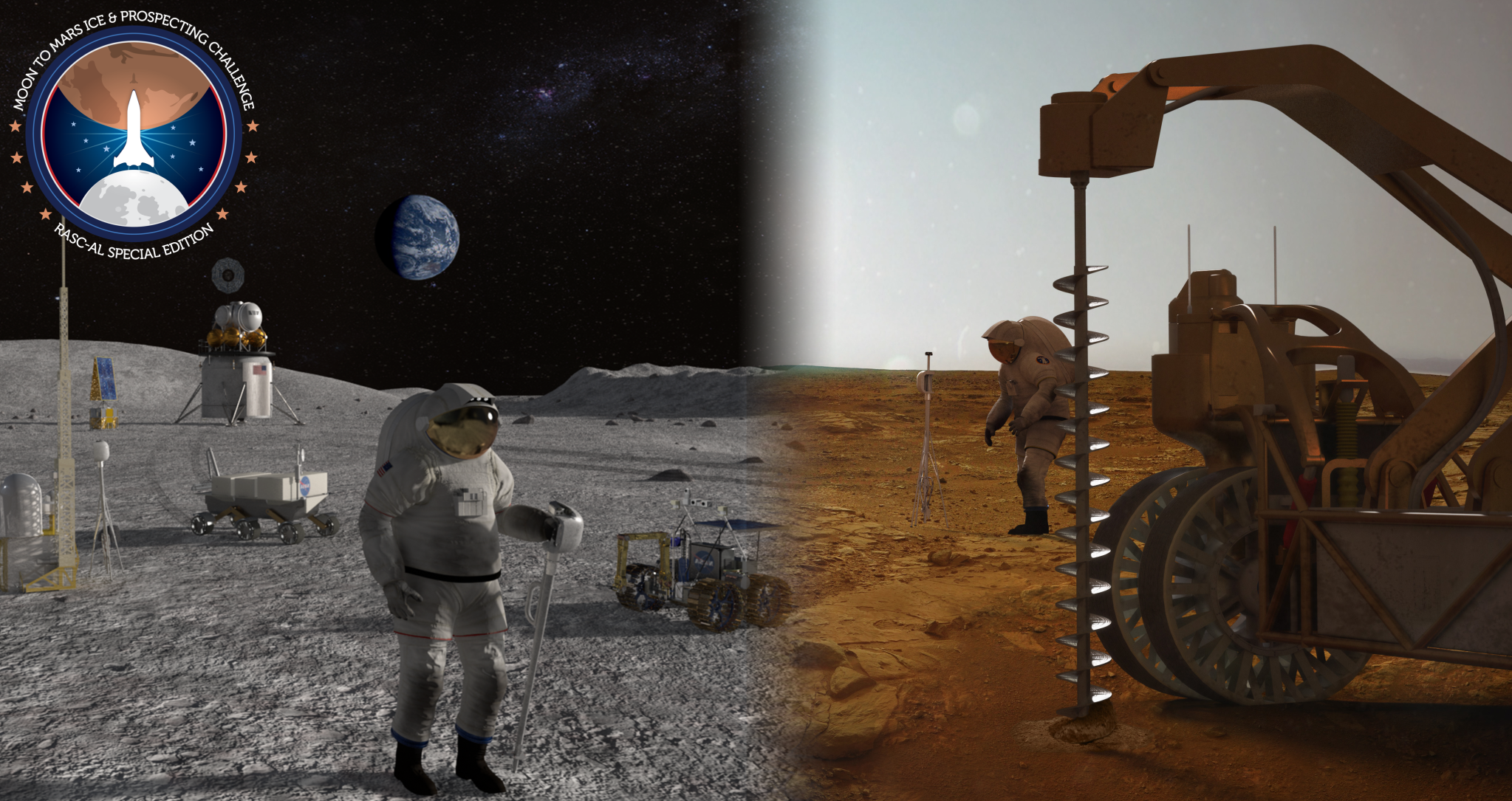By 2024 NASA will return humans to the Moon with the Artemis program. A key ingredient needed to stay anywhere other than Earth is water. One of the most crucial near-term plans for deep space exploration includes finding and using water to support a sustained presence on our nearest neighbor and on Mars.
To access and extract that water, NASA needs new technologies to mine through various layers of lunar and Martian dirt and into ice deposits we believe are buried beneath the surface. As the Apollo program inspired innovation in the 1960s and ’70s, NASA’s new push to the Moon and Mars is inspiring students to solve the challenges for the next era of space exploration.
NASA is working with the National Institute of Aerospace in Hampton, Virginia, to sponsor the 2020 Revolutionary Aerospace Systems Concepts – Academic Linkage (RASC-AL) Special Edition: Moon to Mars Ice and Prospecting Challenge. This technology innovation challenge seeks to advance critical capabilities needed on the surface of the Moon and Mars. The competition, now in its fourth iteration, asks eligible undergraduate and graduate student teams to design and build hardware that can identify, map and drill through a variety of subsurface layers, then extract water from an ice block in a simulated off-world test bed.
“The testing setup for this challenge is representative of some of the conditions we might expect on the Moon and Mars,” said Melvin Ferebee, director of the Systems Analysis and Concepts Directorate at NASA’s Langley Research Center in Hampton, Virginia. “However, because we are always trying to improve simulated testing conditions, teams will propose ideas for making their test beds a more accurate analog for better proof-of-concept testing.”
Interested teams are asked to submit a project plan detailing their proposed concept’s design and operations by Nov. 14, 2019. Up to 10 teams will be selected and receive a $10,000 development stipend. Over the course of six months teams will build and test their systems in preparation for a head to head competition at Langley in June 2020.
“Through efforts like this, we foster really diverse, new approaches from student teams that we might not get otherwise,” said NASA Chief Technologist Douglas Terrier. “It’s a different way of thinking, and that’s the hallmark of innovation.”
The student competitors will develop technology that can be tested on Earth but used on another world. Differences in temperature, atmosphere and gravity are considerations teams will need to account for in their designs. In addition to building and testing an Earth-based water extraction and prospecting system, competitors are required to submit a written path-to-flight description of the modifications their system would need to operate elsewhere in the solar system.
“The goal of this challenge is to see – and learn from – different approaches that could help us understand the sub-surfaces we’ll encounter during the Artemis mission and eventually on Mars,” said Christopher Jones, challenge judge and aerospace engineer at Langley. “The technologies these students are working on are going to pave the way for future human exploration of the Moon and Mars.”
The 2020 RASC-AL Special Edition: Moon to Mars Ice and Prospecting Challenge is sponsored by NASA’s Office of the Chief Technologist, Science Mission Directorate, Space Technology Mission Directorate and Langley’s Systems Analysis and Concepts Directorate, with support from the Human Exploration Operations Mission Directorate’s Advanced Explorations Systems.
For full competition details, visit:























